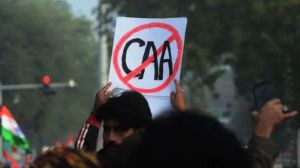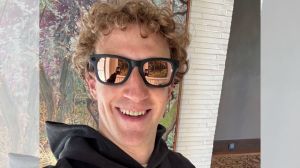The Mortal End of a Deathless Hero
There is the compelling testimony of Juichi Nakamura, Netaji’s interpreter at the Military Hospital. “During all this time,” Nakamura testified, “not a word of complaint either of pain or suffering came from his lips.

This week, after seven years of inquiry, the Mukherjee Commission concluded that Netaji Subhas Chandra Bose didn’t die in a plane crash. Evidence shows otherwise, writes Netaji’s grand-nephew SUGATA BOSE. Gardiner Professor of History at Harvard University, Bose lists compelling facts that nail Mukherjee’s inaccuracy — and calls for an end to this ‘merciless exploitation’ of a national sentiment
In October, 2002, I received a bizarre letter from the Mukherjee Commission asking me to donate 1 ml of blood for a DNA match with “one Gumnami Baba” who “some persons” had claimed was “none other than Netaji Subhas Chandra Bose.” I replied stating that a such a suggestion was a gross insult to the memory of the great leader. “If the Commission feels that it must expend its time, energy and public money following up even the most preposterous claims made by cranks or opportunists,” I wrote, “I regret that I cannot be of any help to it.” I offered to be of assistance if the Commission was prepared to pursue a more credible line of investigation, something that it was clearly not minded to do.
After the surrender of Japan on August 15, 1945, Netaji left Singapore for Bangkok by aeroplane with several of his associates. There was some discussion in Bangkok on August 16, 1945 that he should go into hiding in Thailand. However, Netaji left for Saigon on the morning of August 17, 1945.
He departed Saigon with Col Habibur Rahman of the I.N.A. that afternoon in a Japanese bomber and halted at Touraine for the night. He left Touraine at 5 am on August 18, 1945 and arrived in Taipei early in the afternoon.
After an approximate two-hour halt for refuelling and rechecking of engines, the plane took off. The plane crashed on takeoff at Taipei airport. Netaji was badly injured and died later that night in a nearby hospital. Others killed included General Shidei, two pilots and two other crew members. Habibur Rahman suffered burns but survived. There were six other Japanese survivors. Netaji was cremated in Taipei two days later and his mortal remains were taken to Tokyo on September 5, 1945. Netaji’s remains were received in Tokyo by S A Ayer, a minister in the Azad Hind Government, and Rama Murti, head of the Indian Independence League in Japan.
There is a good deal of pertinent documentary evidence regarding Netaji’s mortal end.
First, there is the evidence of Colonel Habibur Rahman who remained consistent in his testimony from 1945 until his death many decades later. There are many details in Habibur Rahman’s testimony which have the ring of truth.
For example, Netaji called for Abid Hassan, his companion on the submarine journey from Europe to Asia in 1943, to which Rahman replied: “Hassan yahan nahin hai, Sab, main hun, Habib.” Second, five other survivors testified before the Netaji Inquiry Committee headed by Shah Nawaz in 1956. Among them Major Kono, Colonel Sakai and Colonel Nonogaki were interviewed again by Leonard Gordon in 1979 in the presence of Netaji’s daughter Anita.
Third, Dr Taneyoshi Yoshimi, the surgeon in charge of the Military Hospital where Netaji was taken after the aircrash, made a statement dated October 19, 1946, on this subject and repeated it several times until the 1990s.
Fourth, other medical personnel who treated Netaji at the Hospital gave their evidence to the 1956 Inquiry Committee. Fifth, there is the compelling testimony of Juichi Nakamura, Netaji’s interpreter at the Military Hospital who had interpreted Netaji before. “During all this time,” Nakamura testified, “not a word of complaint either of pain or suffering came from his lips. The Japanese officers at the other end of the room were groaning with pain and crying out that they may be killed rather than continue to endure their suffering. This composure of Netaji surprised us all.”
Nakamura described how Habib-ur-Rahman prayed after the doctor declared that Netaji had breathed his last. Nakamura was present at the cremation and also at the time that Netaji’s mortal remains were collected from the crematorium. Sixth, S A Ayer who travelled with Netaji up to Saigon on August 17, 1945, and received Netaji’s remains in Tokyo gave detailed accounts of his experiences.
Investigative reports close to the time corroborated the aircrash story. John Figgess, Chief of British Intelligence in Mountbatten’s Headquarters, confirmed Netaji’s death in his report of July 25, 1946. Two groups of intelligence officers led by Finney and Davis, sent by the Government of India to Saigon and Taipei, reported on the same lines. Harin Shah, an Indian journalist who visited Taipei in the late 1940s, returned the same verdict. S A Ayer made further enquiries in Tokyo in 1951 and gave a report to Nehru dated Sept 26, 1951 that was placed in Parliament.
Since my childhood, I have met and heard the views of Netaji’s closest associates during the period 1943-1945. An overwhelming majority of senior INA officers and leaders of the Azad Hind movement believed Habibur Rahman’s account. My grandfather Sarat Bose learnt of Netaji’s death as a prisoner in Coonoor on August 25, 1945. He wrote in his prison diary: “Today’s Indian Express and Hindu brought the heart-rending news of Subhas’s death as a result of an aeroplane crash. Divine Mother, how many sacrifices have we to offer at your altar!”
My father Sisir Bose learnt of Netaji’s death in the aircrash from The Tribune newspaper in late August 1945 while he was a prisoner in Lyallpur Jail. He wrote to his mother: “Let’s all try to be brave at the loss of one of the bravest of men.” Both allowed themselves to hope in subsequent years that perhaps their worst fears were not true. My father studied all the relevant evidence and in 1965 made his own investigations in Japan and Taipei. He came to the conclusion that Netaji had died a martyr’s death in Tapiei on August 18, 1945.
He was deeply sad in his last days that the hysterical opposition of certain fringe groups had prevented India from bringing back from Japan the mortal remains of the great leader. My grand-aunt Emilie heard the heart-rending news on the radio at her home in Vienna. On January 18, 1946, she wrote to Mrs Woods: “Re:- What you mention about our mutual friend I am sorry to say I cannot share your hopes. I have somehow the feeling that he has died. If it were not true, nobody should be more glad than myself. I got such a shock when I learnt about this incident that for weeks I was only mechanically doing my duties in household and office. The only consolation being little Anita.”
Mahatma Gandhi at first wished his “prince among patriots” would return but accepted by April 1946 that Netaji was no more, writing in Harijan that reason and evidence were more important than “unsupported feeling.”
The mass psychological phenomenon of an initial refusal to accept Netaji’s death and the early hope that he will one day return as the deliverer of his country are perfectly understandable. However, this sentiment has been mercilessly exploited by a handful of people to make all sorts of fraudulent claims about Netaji’s alleged whereabouts after August 18, 1945.
It is time that the people of India came to terms with the mortal end of a deathless hero. I hope that the people of our country will prove to be mature enough to put the fact of Netaji’s corporeal death behind them and concentrate on celebrating his glorious life and honouring his immortal historical legacy.



- 01
- 02
- 03
- 04
- 05




























